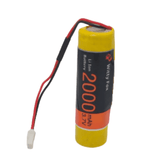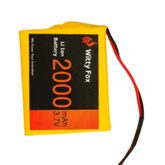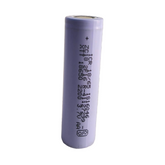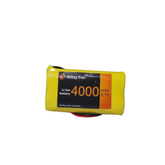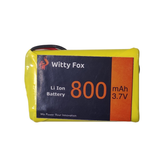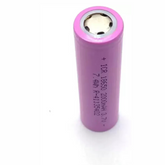A Guide to Understanding Battery Capacity & Specifications
Summary
Discover the secrets behind battery capacity and specifications in our latest blog. Unravel the mysteries of Amp-Hours, mAh, and Watt-Hours, and find out which factor truly determines a battery's capacity. We'll delve into the nitty-gritty of how battery capacity is specified, providing you with a clear understanding of this crucial aspect of your devices. Plus, we'll explore the distinctions between power capacity and power capability. Don't miss out on this enlightening journey into the world of batteries! Read on to become a battery expert today.
Battery Capacity & Lifetime
Battery capacity and lifetime are important considerations when purchasing a device. As such, the battery must be of sufficient quality to meet your needs both now and in the future as you continue to use it regularly over time. The type of technology used in batteries affects life span and performance which is why professional marketers have developed ways to measure these criteria for different products on the market today.

Capacity can refer to either total charge stored or number of times one cycle can take place before draining completely, while lifetime refers specifically how long it takes until replacement is needed due to normal wear-and-tear loss caused by usage patterns over prolonged periods.
It makes sense then that devices with higher capacities tend also have longer lifespans because they work at optimum efficiency levels throughout their lifespan; less energy spent means more available per cycle overall! Companies offering warranty features on select models may even provide added protection against premature failure resulting from manufacturing errors - an attractive option for customers seeking maximum durability assurance out of their investment choices too!
read more : All About Lithium Polymer Batteries (LiPo)
Battery Capacity - Amp-Hours, mAh, and Watt-Hours
Battery capacity is an important indicator of the performance and longevity of a battery. Amp-hours, milliamp hours (mAh), and watt-hours are all measurements that indicate how much energy can be stored in batteries.
By understanding the differences between these three metrics we can identify which type is most suitable for our application needs. Amp-hour ratings measure the maximum amount of current that any given battery can provide over time without significantly draining its total supply power – it's like measuring water being pumped through a hose by gallons per minute rather than litres per second; its useful when needing to know just how long something will last on one charge or cycle before requiring recharging/replacement such as with car batteries or cordless tools etc.

Milliampere hour ratings denote how many mAhs it takes to discharge a fully charged battery in 1 hour so devices like phones & laptops often list their warranty periods using this standard unit approach while Watt Hours offer perhaps more convenient metric since they relate directly to the electrical output from cells inside them! So if you’re looking for high durability items then look out those boasting bigger WH figures but bear mind AH still plays part too because even though two products might have same numbers written down doesn't mean both perform equally well across entire duration period - put simply: choose wisely depending upon your specific requirements!
read more : What is AH in Battery
Which factor determines the capacity of a battery?
The capacity of a battery ultimately depends on the type, size and construction of the cell. Batteries are made up of several components including electrodes, electrolytes and separators that work together to produce an electrical current when necessary.
The larger a battery is with more cells in its composition, typically means it will have higher capacities for delivering or storing energy; however this does not necessarily mean it produces more power than a smaller model as certain elements can impair total output efficiency.

Capacity ratings refer to the amount of charge stored by the device between full discharge cycles - which determine how much load (energy) you'll get from your charging source before draining below usable levels - therefore size isn't everything when selecting batteries for applications such as mobile phones or digital cameras – although being able to store large amounts is often seen as advantageous depending on usage patterns & desired longevity outcomes.
Shop safe and powerful 18650 Battery.
read more : Lithium-Ion vs Lithium Polymer Battery
How the capacity of batteries is specified?
The capacity of a battery is defined as the amount of energy it can store. It is typically measured in milliamp-hours (mAh) or watt-hours (Wh). This measurement indicates how many charge cycles a battery may have before needing to be recharged, and also serves as an indication for its overall life expectancy.
Manufacturers usually specify the nominal voltage and capacity of their batteries so consumers are able to choose a product that fits their needs. Capacity ratings can vary depending on temperature and usage conditions, however they often remain fairly consistent over time if proper maintenance procedures are followed such as regular charging/discharging cycles, avoiding extreme temperatures when storing them long term etc.. Ultimately this will result in greater performance from your device's power source while ensuring longevity along with efficient use of available resources.
Also, read our blog on Li-po vs Li-ion Battery detailing comparison based on their specification, advantages, and disadvantages.
Power Capacity and Power Capability
Power capacity and power capability are two concepts that have become increasingly important in the professional world. Power capacity is defined as 'the maximum amount of energy or work a system, device, or object can perform,' while power capability refers to the ability of a machine, tool, computer program or person to fulfill certain requirements.
Both need to be taken into consideration when selecting products for use within any given organization. It's essential that businesses possess both an understanding of their own needs and goals before committing themselves to specific pieces of equipment with inherent capacities and capabilities; otherwise they'll find themselves overstretching resources at best – pursuing impossible outcomes at worst.

A smart investment strategy will be built on careful research into available products so that companies select those which offer them precise levels of performance necessary not only today but also far down the line into future operations too. Ultimately it’s about having all bases covered from start-up ventures through expansions without compromising either efficiency nor output standards; proper management between what’s achievable via power capacity versus what should reasonably proposed by way strengthened/improved via power capability provides key solutions therein!
read more : Automatic Battery Charging Circuit
Conclusion:
Understanding battery capacity and specifications is crucial in a world increasingly reliant on portable power. Whether you're shopping for a new smartphone, planning a camping trip, or considering renewable energy solutions, knowing the ins and outs of Amp-Hours, mAh, and Watt-Hours is essential. The capacity of a battery not only determines how long your device will run but also its overall lifespan. By grasping the intricate details of battery power, you're better equipped to make informed choices and ensure your devices stay charged when you need them most. So, the next time you're in the market for batteries or assessing your energy needs, remember the power lies in understanding the capacity!
If you appreciate our work don't forget to share this post and leave your opinion in the comment box.
Please do check out other blog posts about Popular electronics
Make sure you check out our wide range of products and collections (we offer some exciting deals!)





